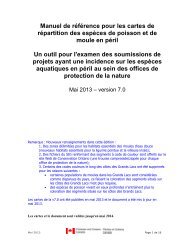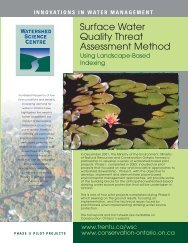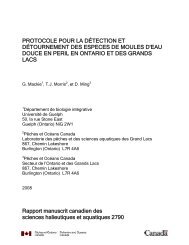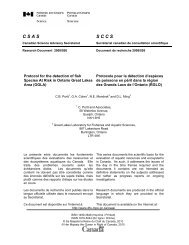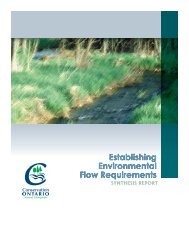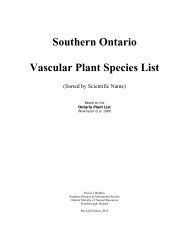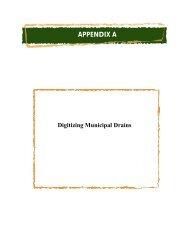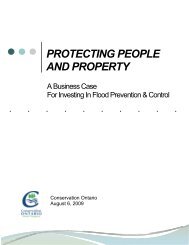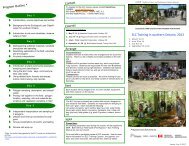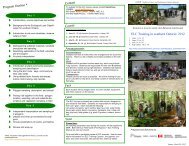kayak - Conservation Ontario
kayak - Conservation Ontario
kayak - Conservation Ontario
Create successful ePaper yourself
Turn your PDF publications into a flip-book with our unique Google optimized e-Paper software.
4.3 Information Transfer and CommunicationRecommendation #1Develop communication products based on the results of water monitoring that clearly identifyissues of relevance to agriculture and feed into stewardship programs, by:• Presenting data and information to agricultural producers, landowners, organizations,and agencies through public-friendly documents that support the environmental needand benefits of stewardship actions. For <strong>Conservation</strong> Authorities, it is recommendedthat this include producing watershed report cards, using appropriate and available data,by 2012.• Developing products that summarize key technical outcomes of past (e.g., PLUARG)and current projects to reduce redundancy and build on what has been learned in pastresearch efforts to guide today’s stewardship program development and delivery.• Holding collaborative workshops, starting in 2009, that involve water resourcemonitoring program and agricultural stewardship program personnel to ensure a strongerlink between disciplines. Discussions during these workshops should include improvingapproaches to translating data to information that can be used in effective decisionmaking by technical experts, agricultural producers and landowners.• Developing a steering committee of representatives with expertise from monitoring andstewardship program development and field or local delivery of watershed programs toguide these actions.DiscussionMany past stewardship research programs have clearly demonstrated through long-termresearch and monitoring the sources and pathways of contamination and the measurablebenefits of many BMPs used today. There is a wealth of information that would be relevantto today’s practitioners. A public-friendly product summarizing the findings of this extensiveresearch would be very useful, enhancing and informing policy development and stewardshipprogram development, and would reduce duplication of completed work. An example of afirst step in this process is the current effort to compile and provide web access to PLUARGand other program documents (see http://gis.lrs.uoguelph.ca/AgriEnvArchives/). AppendixB provides some examples of current networks, such as the Stewardship Network of <strong>Ontario</strong>and <strong>Conservation</strong> Authorities Watershed Stewardship Group, that involve sharing informationabout stewardship initiatives towards more effective collaboration and coordination of effortsin implementation. These networks could be one vehicle for transfer of information betweenpractitioners.8



